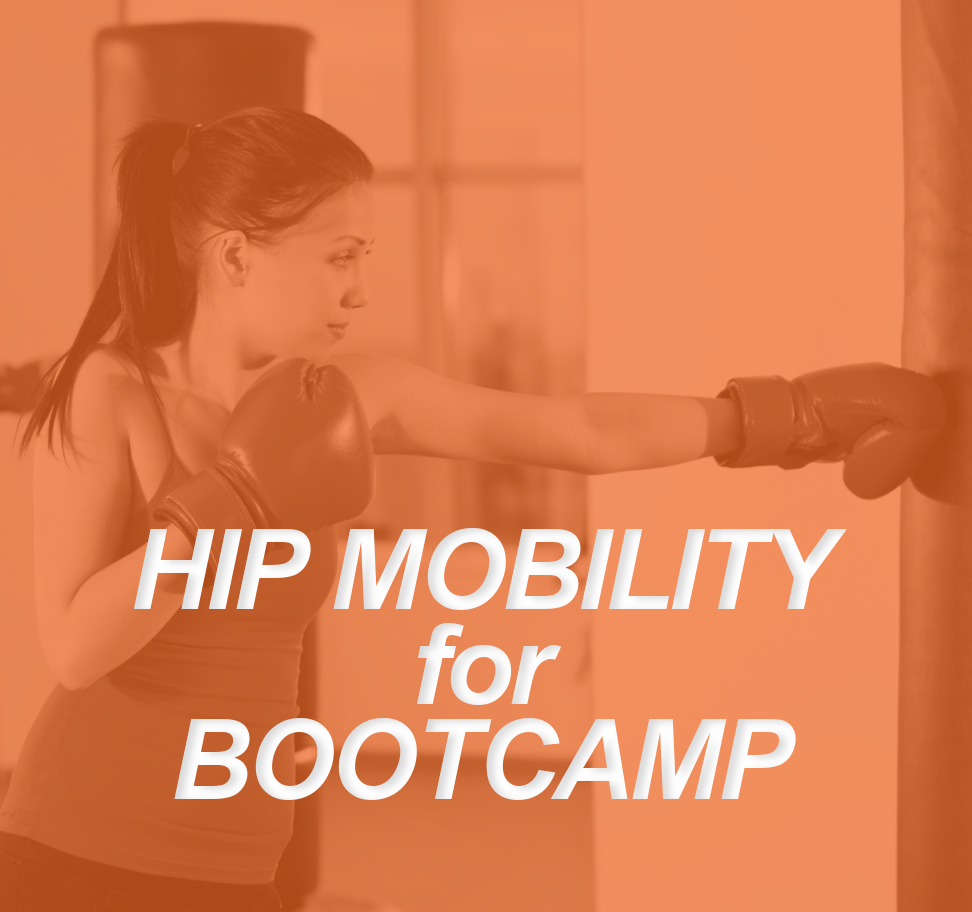Mobility is still a fitness buzz word, and specifically, attention to hip mobility has increased due to its relevance in almost every facet of exercise. Traditionally, a bootcamp class is run as a very “smash and bash” type workout. The bootcamp instructor would program a significant amount of running, push-ups, burpees, etc. and participants would attempt to get through as many reps as possible. If you’re running a ‘smash and bash’ type bootcamp once a week for a bit of fun, that’s great! But if you’re running 4-5 sessions a week like this in this format, and you’ve got participants attending all of them, it’s essential that you include some sort of hip mobility training in your sessions.
In this article we’re going to focus specifically on hip mobility for a few different reasons.
Why is Hip Mobility Important
Chances are in today’s society many of your participants are going to have jobs that involve sitting for long periods of time and potentially driving for long periods of time. If an individual is in a sitting position for extended periods of time – they are likely going to develop short hip flexor muscles, which in turn is going to affect their hip mobility. An astute trainer will assess for this dysfunction.
Furthermore, dysfunctional hips can also lead to pain and/or dysfunction in the other parts of the body. The psoas complex originates in segments of the lumbar spine, and is often associated as one of the causes of lower back pain.
Examples of Hip Mobility Exercises
There’s a massive range of exercises that may improve hip mobility. Below are just a few of my favourites that are very easy to program in the warm-up component of a bootcamp class. I use these four exercises in pretty much every single class I run.
1: The Walking Lunge
The first hip mobility exercise I usually incorporate into a Bootcamp is the walking lunge (often with a twist). This a great exercise to start with as your participants are already standing and they can modify as needed. (Reduce range of motion or eliminate the twist to regress add a balance element or light weight to advance)
2: The Scorpion Stretch
The second hip mobility exercise I usually program is the “scorpion stretch”. This is a great exercise to use early on because it’s more passive and participants can stretch as much or as little as they require.
3: The Spider-man Push-Up
I program the “Spider-man push-up” a little later in the routine as most participants will find this exercise harder than the first two. For that reason, I like to have my participants already a little warmed up before attempting this. If the push-up component is difficult a “spiderman plank” is a great modification.
4: The Cossack Squat
I program the “Cossack squat” last in this routine as most participants will find this the hardest out of the above four so I want to ensure they are already warm and mobile before attempting it. If the full Cossack squat is difficult, a lateral squat/side lunge is a great alternative.
Summary
If you’re a fitness trainer currently running bootcamp sessions, I strongly recommend spending a few minutes incorporating mobility exercises into your sessions – specifically hip mobility exercises. If you’re not sure where to start, the above four exercises are a great start!
If you’re currently workout withing clients that have limited mobility, I recommend checkout this blog “Working with Limited Mobility Clients: Tips and Tricks”.
PS: If you’re a Personal Trainer and looking to improve your knowledge around Mobility Training, you want to check out our Mobility Certification CEU course.



